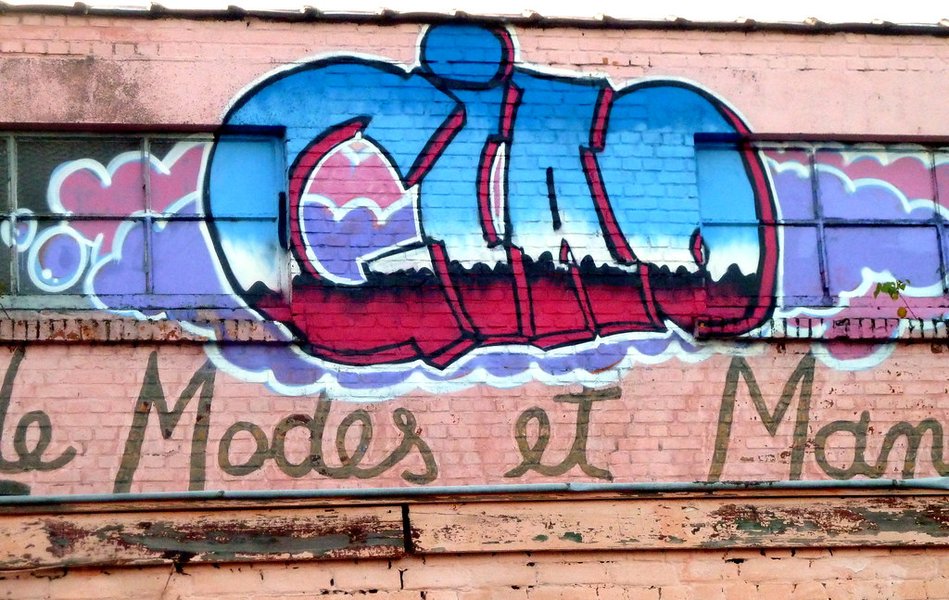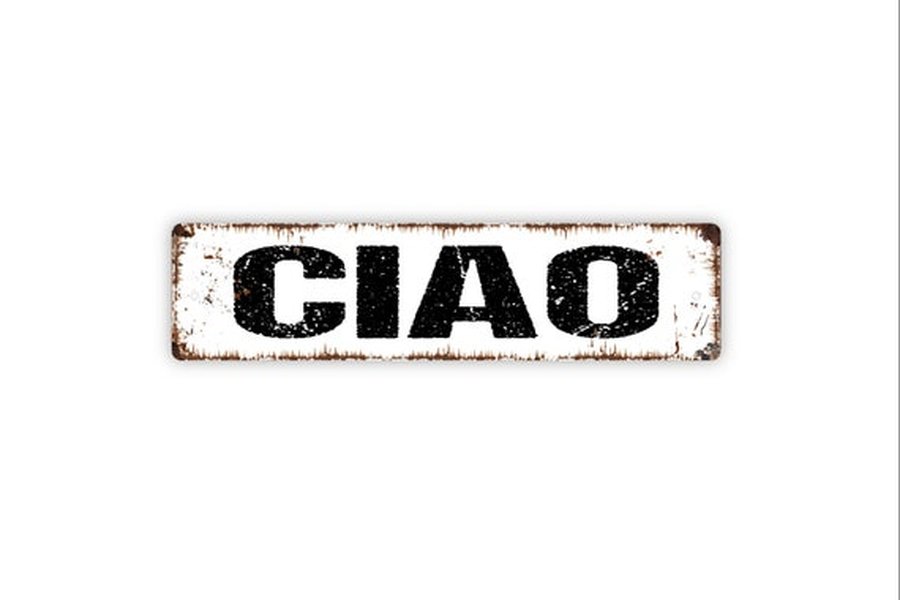
Unraveling the Charm of "Ciao": More Than Just a Greeting
Delve into the fascinating etymology, cultural nuances, and global journey of Italy's most iconic informal salutation.
Key Insights into "Ciao"
- Dual Meaning: "Ciao" uniquely serves as both an informal "hello" and "goodbye" in Italian.
- Servile Origins: Its fascinating etymology traces back to the Venetian dialect phrase "s-ciào vostro," meaning "I am your slave" or "I am at your service."
- Informal Use Only: In Italy, "ciao" is strictly reserved for casual settings among friends and family, contrasting with formal greetings.
The seemingly simple word "ciao" holds a rich tapestry of history, cultural evolution, and linguistic diffusion. Far from being merely a common Italian greeting, its journey from a deferential phrase in medieval Venice to a globally recognized informal salutation is quite remarkable. Understanding "ciao" involves exploring its profound etymological roots, its precise usage within Italy, and its widespread adoption and adaptation across various languages worldwide.

A vibrant "Ciao" graffiti art piece, showcasing its modern global presence.
The Deep Roots of "Ciao": From Servitude to Salutation
The word "ciao" (pronounced /tʃaʊ/ or "chow") is one of the most widely recognized Italian words globally, but its origins are far more complex than a simple greeting. It stems from the Venetian dialect, specifically the phrase "s-ciào vostro," which literally translates to "I am your slave" or "I am at your service." This phrase, derived from the Medieval Latin *sclavus* (meaning "slave," itself of Slavic origin), was originally a respectful and humble greeting used in Venice to express deference and servitude.
Evolution Through Centuries
Over time, particularly by the 12th to 13th centuries, as Venice grew into a prominent trading power between Asia and Europe, the phrase began to shed its servile connotations. It was gradually shortened to "s’ciao" and then simply "ciao," transforming into an informal greeting and farewell. This evolution is a testament to how language adapts to changing social dynamics and cultural contexts. By the early 20th century, "ciao" was fully assimilated into the standard Italian language, solidifying its place as a quintessential informal salutation.
Linguistic Kinship: "Slave" and "Ciao"
It's fascinating to note that "ciao" shares an etymological lineage with words like the English "slave" and the Italian "schiavo." This common ancestry highlights a historical period where many Slavs were enslaved in medieval Europe, linking a term of greeting to a word rooted in forced labor. This linguistic connection underscores the profound shift in meaning that "ciao" underwent, moving from a phrase acknowledging social hierarchy to a casual expression of camaraderie.
Navigating Italian Etiquette: When and Where to Use "Ciao"
While "ciao" is globally recognized, its usage in Italy is governed by strict rules of informality. Understanding these nuances is crucial for anyone interacting with Italians, as misusing "ciao" can inadvertently convey disrespect or over-familiarity.
The Informal Realm of "Ciao"
In modern Italian, "ciao" is exclusively informal. It is reserved for interactions among close friends, family members, peers, and individuals with whom one shares a familiar relationship (those addressed with the familiar "tu"). It functions as a versatile term, used for both greeting ("hello") and parting ways ("goodbye"). For instance, you would use "ciao" when encountering a friend in the street or when bidding farewell to a relative.
Formal Alternatives: Showing Respect
Conversely, "ciao" is considered inappropriate and even impolite in formal settings. This includes interactions with strangers, elders, authority figures, or in professional environments. In such situations, Italians opt for more formal greetings and farewells:
- "Buongiorno" (good morning/good day): Used from morning until early evening.
- "Buonasera" (good evening): Used from early evening onwards.
- "Buonanotte" (good night): Used exclusively as a farewell before going to bed.
- "Arrivederci" (goodbye): A standard, polite farewell.
- "Salve" (a polite but not overly formal hello): A versatile greeting that can be used in situations where "ciao" might be too informal and "buongiorno" too rigid.
This distinction is particularly important for non-native speakers. While Italians will often understand and forgive a foreigner's misuse, adhering to proper etiquette demonstrates respect for their culture and language. Older generations, in particular, may use "ciao" less frequently and may view its casual use by younger individuals or foreigners in formal contexts as a sign of impoliteness.
The Dual Nature: Hello and Goodbye
One of the unique aspects of "ciao" is its dual meaning. Unlike many greetings that are specific to arrival or departure, "ciao" seamlessly serves both purposes. This versatility is shared by a few other global greetings, such as "aloha" in Hawaiian, "salām" in Arabic, and "shalom" in Hebrew.

A decorative "Ciao" sign for home, illustrating its dual function as both hello and goodbye.
Global Adoption and Cultural Impact
Beyond Italy, "ciao" has achieved remarkable global recognition, becoming a loanword in countless languages. Its spread is largely attributed to Italy's historical prominence in trade, migration, and cultural influence.
Worldwide Diffusion
The adoption of "ciao" extends across continents, from Europe to Asia and beyond. In many languages, it primarily functions as an informal "goodbye," though in some, it retains its dual "hello" and "goodbye" meaning. For example:
- In **Spanish-speaking countries** like Argentina, Uruguay, and Chile, "chau" (a phonetic variant) is a very common expression for "goodbye."
- In **Serbo-Croatian** and other Balkan languages, "ćao" is used for both greetings and partings.
- In **Malay**, "cau dulu" informally means "goodbye," and "cau" can even function as a verb meaning "to leave."
The Hemingway Effect and Popular Culture
The international fame of "ciao" received a significant boost from popular culture. Ernest Hemingway's 1929 novel *A Farewell to Arms*, set in northeast Italy, is often credited with popularizing "ciao" in the English-speaking world. This literary exposure, coupled with its natural charm and brevity, helped solidify its place in global vernacular.
This video delves into the intriguing etymological journey of the word "ciao," explaining its transformation from a phrase of servitude to a universal greeting. It's highly relevant for understanding the historical context discussed.
"Ciao" Beyond the Salutation: Other Meanings
While the Italian salutation is the primary meaning of "ciao," it's worth noting that the acronym "CIAO" has also been adopted for various other entities, completely unrelated to its linguistic origin. These include:
- Columbia International Affairs Online (CIAO): A vast online resource for international politics and related academic fields.
- Chandra Interactive Analysis of Observations (CIAO): A specialized software package used in X-ray astronomy data analysis.
- Ciao.com: A former European-based online shopping portal that allowed users to write product reviews.
- Cyber Intelligence Analytics and Operations (CIAO) and Critical Infrastructure Assurance Office (CIAO): Programs or offices related to cybersecurity and critical infrastructure security.
These acronyms demonstrate the adaptability of the sequence of letters, though they bear no semantic connection to the Italian word.
A Comparative Analysis of "Ciao" Usage
To further illustrate the nuanced usage of "ciao" compared to other greetings, the following radar chart provides a qualitative assessment across various dimensions. This chart is based on the consensus of linguistic and cultural contexts derived from the provided information, reflecting the perceived appropriateness and frequency of use.
This chart visually demonstrates the appropriate contexts for "ciao" versus more formal greetings like "Buongiorno/Buonasera" and "Arrivederci." "Ciao" excels in informality and versatility but scores low on politeness in formal settings. Formal greetings, conversely, rank high in politeness and usage by older generations, despite being less versatile.
The Essence of "Ciao": A Mindmap of Key Attributes
To further synthesize the multifaceted nature of "ciao," the following mindmap provides a hierarchical overview of its core characteristics, origins, usage, and global impact.
This mindmap offers a structured visual representation of "ciao," connecting its core meaning to its etymology, usage, and global influence. It serves as a quick reference for understanding the various facets of this fascinating word.
Comparative Table of Italian Greetings
To provide a clearer distinction between "ciao" and other common Italian greetings, the following table summarizes their characteristics, usage, and connotations. This helps in understanding when each salutation is most appropriate.
| Greeting | Meaning | Context | Time of Day | Connotation |
|---|---|---|---|---|
| Ciao | Hello / Goodbye | Informal (friends, family, peers) | Any time | Casual, friendly, familiar |
| Buongiorno | Good morning / Good day | Formal (strangers, elders, professionals) | Morning until early evening | Polite, respectful, standard |
| Buonasera | Good evening | Formal (strangers, elders, professionals) | Early evening onwards | Polite, respectful, standard |
| Buonanotte | Good night | Formal/Informal Farewell (before sleep) | Late evening/Night | Polite, used specifically for bedtime |
| Arrivederci | Goodbye | Formal/General (strangers, professionals) | Any time | Polite, standard farewell |
| Salve | Hello | Semi-formal / Neutral (less formal than buongiorno, more formal than ciao) | Any time | Polite, versatile, avoids over-familiarity |
This table highlights the importance of context and social distance when choosing an Italian greeting. While "ciao" is endearing in the right situation, formal alternatives ensure respect in more structured interactions.
Frequently Asked Questions About "Ciao"
Conclusion
The word "ciao" is a linguistic marvel, encapsulating centuries of cultural evolution and global exchange. Its journey from a phrase denoting servitude in medieval Venice to a universally recognized informal greeting and farewell is a testament to the dynamic nature of language. While its global adoption speaks to its charm and versatility, understanding its specific informal usage within Italy is key to authentic and respectful communication. "Ciao" remains a vibrant symbol of Italian culture, a small word with a profound story.
Recommended Further Exploration
- Explore the comprehensive history of Italian greetings and their evolution.
- Understand broader Italian cultural etiquette, especially for travelers.
- Investigate the fascinating process of how words become loanwords across different languages.
- Delve into the rich diversity and historical significance of various Italian dialects.